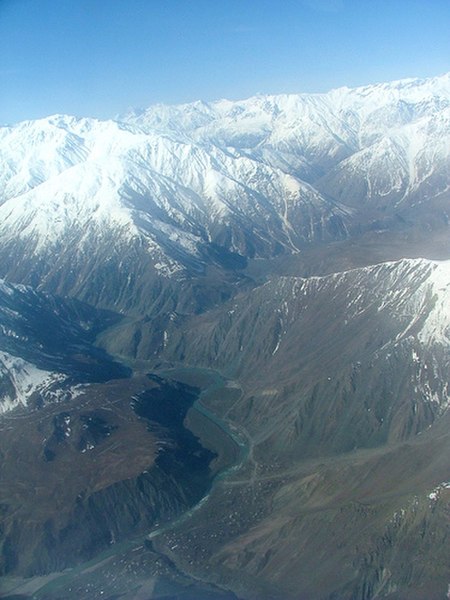The Panj, traditionally known as the Ochus River and also known as Pyandzh (derived from its Slavic word, is a river in Afghanistan and Tajikistan and is a tributary of the Amu Darya. The river is 921 kilometres long and has a basin area of 114,000 square kilometres. It forms a considerable part of the Afghanistan–Tajikistan border.
The Panj River from space
The Panj near Kevron, on the border of Tajikistan and Afghanistan
Panj river
The Amu Darya, also called the Amu, the Amo, and historically the Oxus, is a major river in Central Asia, which flows through Tajikistan, Turkmenistan, Uzbekistan and Afghanistan. Rising in the Pamir Mountains, north of the Hindu Kush, the Amu Darya is formed by the confluence of the Vakhsh and Panj rivers, in the Tigrovaya Balka Nature Reserve on the border between Afghanistan and Tajikistan, and flows from there north-westwards into the southern remnants of the Aral Sea. In its upper course, the river forms part of Afghanistan's northern border with Tajikistan, Uzbekistan, and Turkmenistan. In ancient history, the river was regarded as the boundary of Greater Iran with Turan, which roughly corresponded to present-day Central Asia. The Amu Darya has a flow of about 70 cubic kilometres per year on average.
Looking at the Amu Darya from Turkmenistan
Amu Darya delta from space
Afghanistan-Tajikistan bridge over the Darya
Pontoon Bridge on the Amu River near Urgench, in 2014 it was replaced by the stationary bridge.







